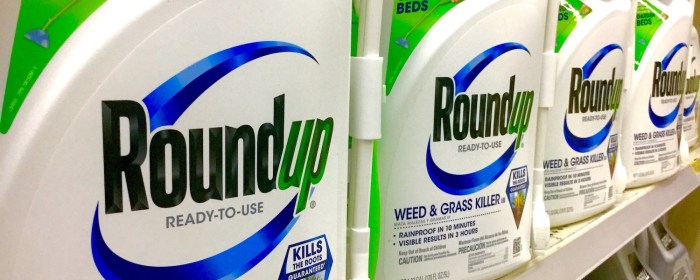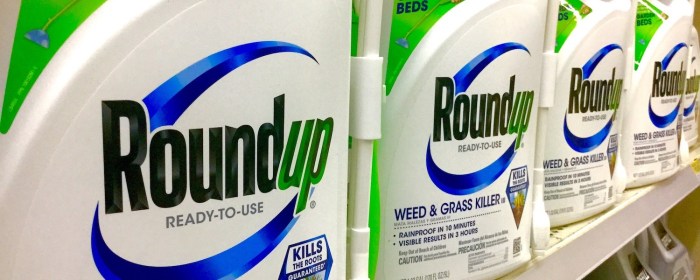Chipotle food allergy information is crucial for ensuring a safe dining experience for everyone. This guide dives deep into the specifics of common food allergies, Chipotle’s ingredients, cross-contamination risks, and how to communicate effectively about allergies within the restaurant. We’ll explore the legal requirements and best practices, empowering both Chipotle staff and customers with the knowledge to navigate potential issues.
From understanding the prevalence of food allergies and their potential severity to exploring Chipotle’s menu ingredients and potential cross-contamination risks, this guide provides comprehensive insights. We’ll cover resources for allergy information, effective communication strategies, and crucial steps to minimize cross-contamination risks within the restaurant. By equipping yourself with this information, you can confidently dine at Chipotle while ensuring a safe experience for yourself and others.
Food Allergy Information Overview
Food allergies are a growing concern, affecting millions worldwide. Understanding the prevalence, severity, and proper management of these allergies is crucial for both individuals and food businesses. Accurate and accessible information empowers those with allergies to make safe choices, preventing potentially life-threatening reactions.This overview details the importance of clear communication about food allergies in restaurants, outlining legal requirements and best practices for ensuring customer safety.
Examples of effective allergy information dissemination will also be provided, emphasizing the critical role accurate information plays in minimizing risks for individuals with food allergies.
Common Food Allergies and Prevalence
Food allergies are reactions to proteins in certain foods that trigger an immune response. Common culprits include peanuts, tree nuts, milk, eggs, fish, shellfish, soy, and wheat. The prevalence of these allergies varies geographically and by age group, but they are becoming increasingly common. Research suggests that rates are rising, impacting more individuals and increasing the need for careful handling and clear communication of food allergies in various settings, including restaurants.
Potential Severity of Food Allergies
Food allergies can range from mild reactions, such as hives or itching, to severe, life-threatening anaphylaxis. Anaphylaxis is a rapid and potentially fatal allergic reaction that can affect multiple systems in the body. Prompt medical attention is essential in cases of anaphylaxis, and those at risk need to carry emergency epinephrine auto-injectors (like EpiPens) and understand how to use them.
It is critical to understand the diverse range of reactions and the importance of quick intervention for those experiencing an allergic reaction.
Knowing what to eat at Chipotle can be tricky, especially if you have food sensitivities. It’s crucial to check their ingredients and look into possible cross-contamination. For those with immune thrombocytopenia (ITP), understanding which foods to eat and avoid is also essential. The dietary restrictions for ITP can significantly impact your choices, as detailed in this helpful resource on foods to eat and avoid with itp.
This knowledge can help you make safe and informed decisions when ordering at Chipotle or choosing other foods.
Legal Requirements and Best Practices for Food Businesses, Chipotle food allergy information
Food businesses have a legal and ethical obligation to handle food allergies responsibly. Regulations vary by region, but generally, businesses are expected to provide accurate information about ingredients and potential allergens in their food products. This includes detailed menus, clearly labeled ingredients, and clear communication with customers about potential cross-contamination. Best practices go beyond simply meeting minimum legal requirements.
A proactive approach to preventing cross-contamination in food preparation, including the use of separate equipment and utensils for allergen-containing foods, is vital. Staff training and thorough ingredient labeling are key components of effective allergy management.
Communicating Allergy Information Effectively
Clear and concise communication is paramount for effectively managing food allergies in restaurants. Examples include:
- Detailed Menus: Menus should clearly list ingredients, including common allergens. For example, instead of just “chicken salad,” the menu should specify “chicken salad containing mayonnaise and potentially eggs and dairy.” A specific allergy-friendly menu section or an easily accessible online menu could further enhance accessibility.
- Allergen Information on Food Items: Displaying ingredient lists on food labels and clearly marking allergen-containing dishes on the menu helps customers make informed choices. For instance, using a symbol or a specific font for allergen information makes it stand out to customers and staff alike.
- Staff Training: Staff must be thoroughly trained on how to identify allergens, how to handle potential cross-contamination, and how to communicate allergy information accurately to customers. Training materials should be readily available, and regular updates on the most recent allergy information should be given.
- Customer Communication: Restaurants should proactively ask customers about allergies and clearly explain the preparation process of dishes. For example, asking “Are there any specific allergies or dietary restrictions?” demonstrates care and respect. This should be a regular practice to avoid surprises and possible errors.
Restaurants that implement these practices create a safe environment for customers with food allergies and demonstrate a commitment to customer well-being. Such proactive measures help to prevent severe reactions and ensure a positive dining experience for all.
Chipotle Specific Information

Chipotle Mexican Grill is a popular restaurant chain known for its customizable burritos, bowls, and salads. However, the popularity of customization also presents unique challenges for individuals with food allergies. Understanding the ingredients used in Chipotle’s dishes and the potential for cross-contamination is crucial for safe dining experiences.This section dives deep into Chipotle’s ingredient use, cross-contamination risks, and the importance of clear communication about allergens.
We’ll also explore common food allergies and corresponding Chipotle menu items to avoid, and present a practical table outlining potential allergens in various dishes.
Typical Ingredients in Chipotle Menu Items
Chipotle’s menu primarily features ingredients like chicken, steak, barbacoa, carnitas, rice, beans, corn tortillas, various salsas, and a range of vegetables. The use of fresh ingredients and customizable options make the experience appealing, but also require meticulous attention to allergen control. Different protein options, like chicken or steak, are often prepared in the same kitchen equipment, posing a cross-contamination risk if not managed carefully.
Potential Cross-Contamination Risks at Chipotle
Cross-contamination occurs when allergens from one food come into contact with another food. At Chipotle, this risk exists due to the shared preparation areas for different ingredients. For example, if a chicken dish touches a dish containing nuts during preparation, there is a chance of cross-contamination, exposing a customer to an allergen they might not be aware of. This risk is exacerbated by the high volume of orders and the rapid turnaround times in many Chipotle restaurants.
Effective food safety practices are vital in minimizing the risk of cross-contamination.
Importance of Clear Allergen Information
Clear communication of ingredients and allergen information is critical for safe dining. Chipotle should clearly label all ingredients, especially allergens, in their online menu and in-store materials. This includes specifying any potential cross-contamination risks, such as a dish being prepared near a known allergen. Customers with severe allergies need this information to make informed decisions about ordering and ensure they are not exposed to allergens they are sensitive to.
Common Food Allergies and Associated Chipotle Menu Items to Avoid
Customers with certain food allergies need to be mindful of specific Chipotle menu items. For instance, individuals with nut allergies should avoid any dishes that might have been prepared near nuts. A thorough review of ingredients is essential for customers with allergies.
Potential Ingredients and Allergens in Chipotle Dishes
This table Artikels potential ingredients and associated allergens in some common Chipotle dishes. Note that this is not an exhaustive list and specific ingredients may vary depending on location and preparation.
| Chipotle Dish | Potential Ingredients | Potential Allergens |
|---|---|---|
| Chicken Burrito | Chicken, rice, beans, lettuce, tomato, salsa, tortillas | Chicken (if allergic), soy (if in marinade), dairy (if cheese used), nuts (if prepared near nuts) |
| Steak Bowl | Steak, rice, beans, corn, salsa, guacamole | Beef (if allergic), dairy (if sour cream or cheese), nuts (if prepared near nuts) |
| Vegetarian Bowl | Rice, beans, corn, black beans, veggies, salsa | Soy (if in dressing), dairy (if cheese used), nuts (if prepared near nuts) |
| Crispy Chicken Bowl | Crispy chicken, rice, beans, lettuce, tomato, salsa, tortilla | Chicken (if allergic), soy (if in marinade), dairy (if cheese used), nuts (if prepared near nuts) |
Allergy Information Resources
Navigating food allergies can feel overwhelming. Knowing where to find accurate and up-to-date information is crucial for both individuals with allergies and those who prepare food for them. This section dives into reliable resources and effective strategies for managing allergy concerns.Reliable sources are essential when dealing with food allergies. Information from credible organizations and websites can significantly impact safety and well-being.
The goal is to equip readers with a toolkit for finding trustworthy information.
Credible Resources for Food Allergy Information
Finding accurate and up-to-date information is critical when managing food allergies. A variety of resources can provide valuable support, including websites, organizations, and publications.
- Food Allergy Research & Education (FARE): FARE is a leading organization dedicated to food allergy research, education, and advocacy. Their website offers a wealth of information, including resources for parents, caregivers, and individuals with food allergies.
- The American Academy of Allergy, Asthma & Immunology (AAAAI): AAAAI provides detailed information about food allergies, including diagnosis, treatment, and management strategies. Their website serves as a comprehensive resource for medical professionals and the public.
- The Centers for Disease Control and Prevention (CDC): The CDC offers valuable data and statistics on food allergies, including prevalence and trends. They also provide resources for preventing food-related reactions.
- Mayo Clinic: Mayo Clinic’s website offers in-depth information on food allergies, including symptom recognition, diagnosis, and treatment options. It is an excellent resource for health-related concerns.
Methods of Providing Allergy Information
Various methods exist for delivering allergy information, each with its own strengths and weaknesses. Understanding these differences can help individuals select the most appropriate approach for their needs.
- Online Resources: Websites provide quick access to a vast amount of information. However, it’s vital to assess the credibility of the source before relying on any information found online. Ensuring the source is trustworthy and well-researched is crucial for safety.
- Printed Materials: Brochures, pamphlets, and other printed materials offer detailed information, particularly beneficial for those who prefer a more tangible format. These materials can be helpful for reference, especially in physical settings.
- Staff Training: In settings like restaurants, staff training is crucial for accurate allergy management. Training equips staff with the knowledge and skills to handle allergy requests effectively and safely. This ensures consistent application of safety protocols.
Importance of Up-to-Date Information
Food allergy research and understanding are constantly evolving. Staying current with the latest information is critical for ensuring accurate and effective management strategies. This dynamic field necessitates continuous updates to reflect advancements and new findings.
- Regular Updates: Regular updates ensure that information remains accurate and reflects the most recent research. Staying informed helps individuals and organizations make well-informed decisions related to food allergies.
Effective Use of Online Resources
Navigating the vast expanse of online information requires careful consideration. Using online resources effectively involves evaluating credibility, understanding limitations, and critically analyzing the information presented.
- Evaluating Credibility: Assess the source’s reputation and the expertise of the authors or organizations behind the information. Checking for affiliations with reputable organizations or medical institutions is crucial.
- Seeking Multiple Sources: Consulting multiple credible sources strengthens the accuracy of the information received. Comparing information from different sources can offer a more comprehensive understanding of a specific topic.
- Checking for Date of Publication: Look for the date the information was published or last updated. This ensures the information is current and reflects the latest advancements in the field.
Customer Communication and Support
Communicating effectively with customers about food allergies is paramount for Chipotle. Clear and consistent communication builds trust and ensures a safe dining experience for everyone. This section Artikels strategies for handling allergy inquiries, addressing cross-contamination concerns, and providing comprehensive support to customers with food allergies.
Effective Communication Strategies
Effective communication is crucial for allergy management. It involves actively listening to customer concerns, providing clear and concise information, and promptly addressing any questions or anxieties. Empathy and a proactive approach can significantly enhance the customer experience. Customers appreciate being treated with respect and understanding, and this approach fosters loyalty.
Handling Customer Inquiries
Chipotle should establish a standardized process for handling customer inquiries regarding food allergies. This involves trained staff equipped to answer questions accurately and provide appropriate substitutions. Clear signage outlining allergen information and the substitution process can also be extremely helpful.
- Accurate Information Provision: Staff should be thoroughly trained on the ingredients used in Chipotle’s menu items and be able to accurately identify potential allergens. This knowledge ensures that customers receive precise and reliable information about the presence or absence of allergens in specific dishes.
- Active Listening and Empathy: Staff should actively listen to customers’ concerns and acknowledge their sensitivities. Empathetic responses demonstrate care and understanding, building trust and confidence in the restaurant’s commitment to safety.
- Comprehensive Information Resources: Chipotle should provide easily accessible resources for customers, such as detailed ingredient lists, allergen statements, and contact information for specific inquiries. This empowers customers to make informed decisions and promotes transparency.
Addressing Cross-Contamination Concerns
Addressing cross-contamination concerns is essential for ensuring food safety. Chipotle should implement rigorous procedures to minimize the risk of cross-contamination between allergen-containing and allergen-free food items. This includes proper handwashing practices, dedicated utensils and equipment for allergen-free items, and separate preparation areas.
- Dedicated Equipment: Chipotle should have dedicated cutting boards, utensils, and preparation areas for dishes containing allergens and those that do not. This helps to prevent cross-contamination.
- Staff Training: Training staff on proper handwashing techniques and cross-contamination prevention protocols is essential. This ensures consistency in safety measures across all Chipotle locations.
- Clear Signage: Visually communicating cross-contamination prevention procedures with clear signage near preparation areas and in the dining area is helpful. This reinforces the commitment to food safety.
Importance of Clear and Consistent Communication
Providing clear and consistent communication to customers with allergies is crucial for their safety and well-being. It demonstrates a commitment to customer satisfaction and builds a positive reputation for Chipotle.
- Customer Safety: Accurate information and transparent procedures minimize the risk of allergic reactions. This is paramount to the well-being of customers with allergies.
- Building Trust: Consistent communication fosters trust and reliability in Chipotle’s ability to handle allergy concerns, leading to customer loyalty.
- Positive Reputation: Chipotle’s commitment to food safety and allergy awareness can contribute to a positive reputation and increase customer satisfaction.
Responding to Allergy Inquiries: A Step-by-Step Guide
This step-by-step guide provides a framework for Chipotle staff to respond to allergy inquiries:
- Listen attentively: Carefully listen to the customer’s concerns and questions about potential allergies.
- Acknowledge and validate: Acknowledge the customer’s concern and validate their need for accurate information.
- Provide accurate information: Refer to the menu and ingredient list, or contact the kitchen to confirm allergen information.
- Offer substitutions: Suggest appropriate substitutions if needed to meet the customer’s dietary restrictions.
- Confirm understanding: Confirm with the customer that they understand the information provided.
- Document the interaction: Keep a record of the customer’s request and the actions taken.
Addressing Cross-Contamination
Food safety is paramount, especially for individuals with severe allergies. Cross-contamination, the transfer of allergens from one food to another, poses a significant risk. Understanding the mechanisms of cross-contamination and implementing preventive measures are crucial in creating a safe environment for all customers.
Knowing Chipotle’s food allergy information is crucial for anyone with dietary restrictions. It’s important to be aware of potential cross-contamination, especially when considering your overall health, including managing diabetes and A1C levels. Checking their detailed information online is a smart move before your next visit to ensure a safe and delicious meal, avoiding any unexpected reactions. For more insight on how blood sugar levels and A1C relate to diabetes, check out this resource on diabetes and a1c levels.
Understanding your options and the potential interactions is key to enjoying Chipotle safely.
The Nature of Cross-Contamination
Cross-contamination occurs when allergens are unintentionally transferred from one food item or surface to another. This can happen during various stages of food preparation, from raw ingredients to finished products. For example, if a knife used to cut raw peanuts is then used to cut lettuce without proper cleaning, the lettuce becomes contaminated. This invisible transfer can have devastating consequences for those with severe allergies.
Impact on Individuals with Food Allergies
Cross-contamination can trigger severe allergic reactions, ranging from mild discomfort to life-threatening anaphylaxis. Even trace amounts of an allergen can cause a reaction in susceptible individuals. Reactions vary greatly in severity, with some individuals experiencing only mild symptoms, while others may suffer from life-threatening anaphylaxis.
Preventive Measures at Chipotle
Chipotle restaurants can significantly reduce the risk of cross-contamination by adhering to stringent protocols and implementing a comprehensive food safety program. These measures involve careful handling of ingredients, precise cleaning of surfaces, and dedicated equipment for specific food types. Training staff to understand and follow these procedures is vital.
Kitchen Procedures to Reduce Cross-Contamination
- Separate Ingredient Handling: Using different cutting boards, utensils, and cookware for raw and cooked ingredients is a critical first step. This prevents cross-contamination between potentially allergenic and non-allergenic items. For example, a dedicated cutting board for raw chicken should not be used for salad ingredients.
- Thorough Cleaning and Sanitization: Regular and thorough cleaning of all surfaces, equipment, and utensils with appropriate sanitizers is essential. This includes sinks, countertops, cutting boards, and all food preparation tools. This is crucial to eliminate any traces of allergens.
- Dedicated Equipment: Utilizing separate equipment for different food types minimizes the risk of cross-contamination. This includes specialized equipment for handling raw ingredients, such as separate knives and utensils for each type of food. For example, a separate set of knives should be used for cutting raw seafood and vegetables.
- Staff Training: Comprehensive training for all staff members on proper food handling and cross-contamination prevention is a vital component of the safety plan. Training should emphasize the importance of identifying and avoiding cross-contamination risks. Regular refresher courses should be implemented to maintain awareness and reinforce best practices.
Creating a Clean and Safe Kitchen Environment
A clean and safe kitchen environment minimizes cross-contamination risks. This involves maintaining a well-organized workspace, implementing color-coded systems for different food types, and ensuring proper ventilation.
“A clean kitchen environment is the first line of defense against cross-contamination.”
A well-maintained kitchen reduces the likelihood of cross-contamination.
- Organization: Properly organizing ingredients and equipment is essential. This includes storing ingredients in a manner that minimizes contact between potentially allergenic and non-allergenic items. For example, raw peanuts should be stored separately from other ingredients.
- Color-Coded Systems: Implementing color-coded systems for different food types (e.g., red for raw meat, green for vegetables) helps visually distinguish between potentially allergenic and non-allergenic items. This visual cue assists staff in adhering to safe handling procedures.
- Ventilation: Adequate ventilation in the kitchen helps prevent airborne allergens from spreading. This includes using exhaust fans and maintaining proper air circulation to minimize the risk of cross-contamination.
Addressing Specific Allergens

Understanding and managing food allergies is crucial for creating a safe and inclusive dining experience. Chipotle’s commitment to providing accurate allergen information and safe preparation methods ensures a positive experience for all customers. This section details common allergens and how they might appear in Chipotle dishes, emphasizing the importance of clear labeling and effective handling of dietary restrictions.Accurate allergen information is vital to prevent adverse reactions.
A well-defined system for handling dietary restrictions, including allergies, fosters trust and ensures the safety of all customers.
Common Allergens and Their Potential Presence
Chipotle takes a proactive approach to informing customers about the potential presence of common allergens in their food. This involves detailed labeling and transparent communication about ingredients and preparation processes.
Finding out about food allergies, especially at Chipotle, is crucial. Understanding potential triggers is key, and sometimes, unexpected things can impact digestion. For example, have you considered if menopause might be contributing to digestive issues? If you’re experiencing nausea, checking out resources like this page on can menopause cause nausea could offer some insight. Ultimately, always double-check Chipotle’s allergy information for the most up-to-date and specific details for your needs.
- Peanuts and Tree Nuts: Peanuts and tree nuts are among the most potent allergens. Cross-contamination can occur during preparation, even in seemingly separate areas. For example, utensils or surfaces used for nut-containing foods might not be properly cleaned before handling other items. This risk is mitigated by using dedicated preparation areas and specialized equipment where possible.
- Dairy: Dairy products, such as milk and cheese, are common allergens. Certain Chipotle dishes, such as queso or some sauces, may contain dairy. Specific information about the presence of dairy is available on the Chipotle website and on menu boards.
- Soy: Soy is another prevalent allergen. Some Chipotle sauces or dressings may contain soy. Customers with soy allergies should always check the menu for detailed information.
- Gluten: Gluten, found in wheat, barley, and rye, is a significant allergen. While Chipotle’s focus is on fresh ingredients, there’s a possibility of cross-contamination during preparation. Customers with gluten sensitivities should always check the menu for details.
Importance of Clear Labeling
Accurate and visible labeling of dishes containing allergens is critical. This allows customers with allergies to make informed decisions and avoid potential risks.
- Chipotle’s labeling practices are designed to clearly indicate the presence of allergens. This includes ingredient lists and notices on specific dishes. This ensures that customers can readily identify potential allergens.
Handling Dietary Restrictions and Allergies
Chipotle is committed to providing a safe and accommodating environment for customers with dietary restrictions, including allergies. This includes providing clear communication and support for those with specific needs.
- A dedicated team at Chipotle can assist customers with questions about specific dishes and ingredients. Customer service representatives are trained to provide detailed information, ensuring accuracy and minimizing potential issues.
- The use of standardized language and processes for communicating allergen information ensures consistent and accurate responses to customer queries.
Comparative Analysis of Allergen Potential
The table below provides a simplified overview of the potential presence of common allergens in some Chipotle dishes. It is crucial to note that this is not an exhaustive list and that the presence of allergens can vary based on specific ingredients and preparation methods.
| Dish | Potential Allergens (Examples) |
|---|---|
| Burrito Bowl | Soy (in some sauces), Dairy (in queso), Gluten (if using wheat tortillas) |
| Tacos | Peanuts (if used in toppings), Dairy (in some sauces), Soy (in some sauces) |
| Salads | Peanuts (if used in toppings), Dairy (in dressings), Gluten (if using croutons) |
| Quesadillas | Dairy (in cheese), Gluten (if using wheat tortillas) |
Educational Materials
Chipotle’s commitment to food safety and inclusivity extends to providing clear and comprehensive information about food allergies. This section details the educational resources we’ve developed to empower our customers and staff with the knowledge needed to navigate dining with allergies confidently. We’re dedicated to creating a safe and welcoming environment for everyone.
Common Questions and Answers
This section provides straightforward answers to frequently asked questions about food allergies at Chipotle. Understanding these common concerns is crucial for creating a positive and informed customer experience.
- What steps does Chipotle take to prevent cross-contamination?
- How can I communicate my allergy needs to Chipotle staff effectively?
- What information is available on the Chipotle website about food allergies?
- Can I request a different preparation method to avoid allergens?
Chipotle employs rigorous procedures to minimize cross-contamination. These include dedicated prep areas for allergens, separate utensils and equipment for different food items, and thorough handwashing protocols for staff. Our staff is trained to identify and avoid potential cross-contamination hazards.
Communicating your allergy needs clearly is essential. Describe your allergy in detail, including any specific ingredients you are avoiding. If possible, bring a written list of the allergens you need to avoid, or take photos of the ingredients you’re allergic to. Ask questions about potential cross-contamination risks to ensure your safety.
Our website provides a comprehensive overview of food allergy information, including detailed lists of ingredients in our menu items and specific allergen information. The site also includes links to resources about food allergies for customers.
Yes, our staff will do their best to accommodate requests for modified preparation methods to avoid allergens. Discuss your needs with the staff, and they will work with you to ensure your safety and satisfaction.
Webpage Format for Allergy Information
A dedicated webpage, accessible from our main site, will provide a user-friendly format for allergy information. This will allow customers to easily access and understand details about ingredients, preparation methods, and cross-contamination procedures.
| Menu Item | Common Allergens | Preparation Notes |
|---|---|---|
| Chicken Burrito Bowl | Soy, Dairy | Prepared in a separate area to minimize cross-contamination |
| Black Bean Burrito | Wheat, Peanuts | Prepared with separate utensils and equipment to avoid cross-contamination |
| Rice Bowl | Tree Nuts | Prepared with dedicated utensils to avoid cross-contamination |
Visual Aids for Allergen Information
Visual aids, like easily digestible graphics and diagrams, will be used to clarify allergen information. Color-coded charts and diagrams will help highlight ingredients and potential cross-contamination risks.
Visual aids are crucial for easy understanding and rapid comprehension of complex information.
Examples include: a flowchart illustrating the steps taken to prepare dishes with and without allergens, or a graphic depicting the different prep areas used in the kitchen to avoid cross-contamination.
Communicating Allergy Information
Effective communication is key to ensuring customer safety. Staff training will cover the proper protocols for receiving and responding to allergy information from customers.
Examples of effective communication include: actively listening to the customer’s concerns, confirming the specific allergy, and asking clarifying questions about any potential cross-contamination risks. Using clear language and providing reassurance to customers will ensure their safety and satisfaction.
Staff Training in Allergy Awareness
Comprehensive staff training programs will equip employees with the knowledge and skills to handle food allergy situations effectively. This training will cover various aspects, including identifying potential cross-contamination risks, communicating with customers, and properly preparing food to minimize allergen exposure.
This training should cover specific procedures for handling orders from customers with allergies, ensuring safety and maintaining a positive customer experience. It will also incorporate regular reviews and updates to ensure the staff is current with best practices.
End of Discussion: Chipotle Food Allergy Information
In conclusion, navigating food allergies at Chipotle requires careful attention to ingredient information, cross-contamination protocols, and effective communication. By understanding the potential risks, utilizing available resources, and implementing safe practices, both Chipotle staff and customers can ensure a positive and allergy-friendly dining experience. This guide provides a solid foundation for understanding and addressing food allergies at Chipotle, fostering a welcoming environment for all.



 (Description: The flowchart visually illustrates the steps involved in preparing deli meats safely, including receiving, cleaning, cutting, packaging, and storage. Each step is clearly labeled and connected to subsequent steps. Key considerations, such as temperature control and cross-contamination prevention, are highlighted.)
(Description: The flowchart visually illustrates the steps involved in preparing deli meats safely, including receiving, cleaning, cutting, packaging, and storage. Each step is clearly labeled and connected to subsequent steps. Key considerations, such as temperature control and cross-contamination prevention, are highlighted.)









